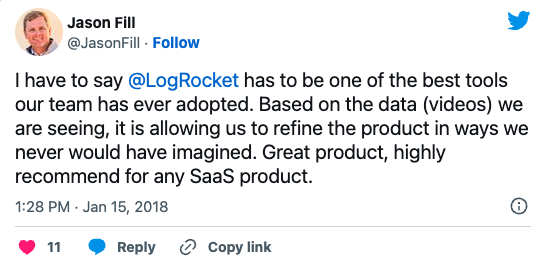

LogRocket’s Galileo AI watches every session, surfacing impactful user struggle and key behavior patterns.
“It depends” is a phrase sometimes referred to as the classic product management answer — and it is! While we all would love a simple answer to many of life’s questions, there are often many factors at play which means, well, it depends!

One factor product managers have to consider in their answers is dependencies. These activities might not be in the direct control of the product team but are required as part of the product development effort for success. No matter how best companies structure themselves to minimize dependencies, often they still exist. Finding out which ones matter and which impact timelines the most can be challenging. That is where the critical path method (CPM) can help.
The critical path method (CPM) is a widely-used project management technique that helps plan and schedule complex projects. It is used to identify the critical path of a project, aka the sequence of activities that determines the minimum completion time of the project.
A critical path is a sequence of “critical” activities in a project that must be completed on time for the project to be completed on schedule. These “critical” activities will also help you to determine the minimum completion time for the project.
For example, if you’re building a house, the critical path might include activities like laying the foundations, building the walls, and installing the roof. All of these are needed to build a house and if any of these activities fall behind schedule, the entire project will be delayed.
The critical path method (CPM) is a tool used to plan and schedule complicated projects. It is based on identifying the critical path of a project and analyzing it to find the minimum completion time for the project.
The method considers the dependencies between different activities and the amount of time required to complete each activity. By understanding the critical path and the amount of “float” or “slack” time available in the schedule, project managers can better plan and control their projects.
The Critical Path Method was first developed by Morgan R. Walker of DuPont and James E. Kelley Jr. of Remington Rand in the late 1950s. They were looking for a way to manage the complicated construction projects they were undertaking, so developed the CPM as a tool to help with this.
The method quickly gained popularity and was soon adopted by many companies and industries. Today, the CPM is widely used in project management and is considered an essential tool for planning and scheduling complicated projects.
You can find the critical path of a project by following these steps:
The critical path method (CPM) is an effective tool for planning and scheduling complicated projects. It is best for when the project has a large number of activities, many of which are interdependent. It’s useful when there are a lot of dependencies between different tasks and activities that must be taken into account to schedule the project effectively.
The method can also be useful when there is a desire to accurately predict the completion date for the project, or if resources need to be allocated optimally.
The CPM is generally less effective for simple projects with only a few activities, or projects where the activities are not closely dependent on each other. The method is also not a good fit for projects that have low predictability and require flexibility since the critical path is based on predetermined dependencies and durations.

![]()
Learn more →
So, if your product development is operating in a project set up and has a high number of dependencies, this tool could be useful for you and your team to better understand your dependencies and the relationship between them.
Also, while many plans are incorrect the moment you finish them, the act of planning can be useful — more useful than the plan itself. Planning gives you space to think about all the factors that will go into your successful product feature or launch and fosters communication between interested parties.
However, CPM is not suitable where there is low predictability or if flexibility is necessary. I have yet to come across a team developing software that can accurately predict how long even the smallest task takes, or that doesn’t have to deal with changing requirements. I believe most product teams operate in a complex environment, over a complicated environment where the CPM is most effective.
The Cynefin framework gives us a way of identifying the structures we operate in and identifies five domains. It covers two of the domains I reference above — the complicated and the complex.
In the complicated domain, things are more predictable and known. You can rely on best practices. Perhaps, if you are developing a product at the later end of the product lifecycle your team is in a complicated domain. However, the complex domain is novel and experimentation is necessary to work out what will be successful. If you are developing anything new you are more likely to fit into this domain and find CPM ineffective.
The critical path method (CPM) is a tool to plan and schedule complicated projects. It is based on identifying the critical path of a project and analyzing it to find the minimum completion time for the project.
For product managers, the analysis of what makes the critical path and consequential planning can be very helpful to foster communication and bring about a shared understanding of the activities needed for success.
However, as many teams operate in a complex, uncertain environment that requires flexibility, the CPM is unlikely to provide the answer you are probably looking for — when will it be done.
LogRocket identifies friction points in the user experience so you can make informed decisions about product and design changes that must happen to hit your goals.
With LogRocket, you can understand the scope of the issues affecting your product and prioritize the changes that need to be made. LogRocket simplifies workflows by allowing Engineering, Product, UX, and Design teams to work from the same data as you, eliminating any confusion about what needs to be done.
Get your teams on the same page — try LogRocket today.